Queen’s gambit chess opening is the most popular gambit in the history of chess. It is played by the top grandmasters in elite tournaments as well as amateur players in club tournament. Over the years, Queen’s gambit chess opening has maintained its popularity.
In this article, we are going to look at various black’s defense and how we should counter them.
Queen’s gambit chess opening initial moves:
It starts with 1.d4 d5 2.c4
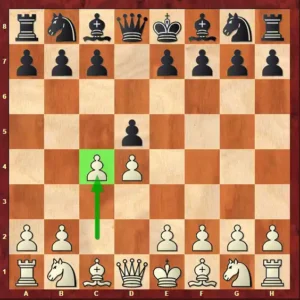
White is sacrificing a pawn on the queenside and that’s why it is known as Queen’s gambit chess opening. It is one of the best chess openings for white.
White’s idea is to exchange a non-central c-pawn with black’s central d-pawn. After this exchange, white will have two central pawns and black will have one central pawn, later in the game it will help white to have more control in the centre.
Against Queen’s gambit chess opening, black has various options and let’s see how we should play against each of the options.
Against Queen’s gambit declined:
Queen’s gambit declined is one of the best chess openings for black. It starts with the moves 1.d4 d5 2.c4 e6
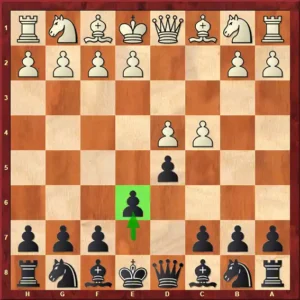
Black declines our gambit pawn and that’s why it is called as Queen’s gambit declined. Against this defense, I recommend exchange variation.
After 1.d4 d5 2.c4 e6 3.Nc3 Nf6 white can play 4.cxd5 exd5 this is known as exchange variation.
5.Bg5 Be7 6.e3 c6 7.Bd3 0-0 8. Nf3 now you can go short castle.
Your plan in this variation of Queen’s gambit opening is to start the minority attack on the queenside. In the middlegame, You will play b4,a4,b5 and create weakness in black’s pawn structure on the queenside and then attack the weak pawns.
Against slav defense:
1.d4 d5 2.c4 c6 is known as slav defense. Black is using c-pawn to defend the d5 pawn and keeps the diagonal of light squared bishop open against our Queen’s gambit opening.

Against it, I recommend a simple piece setup that is objectively good and super easy to implement and it will cut down a lot of opening theory. So you don’t have to spend a lot of time in memorizing opening lines.
It starts with 1.d4 d5 2.c4 c6 3.Nf3 Nf6 4.e3 Bf5 5.Nc3 e6 6.Be2 Nbd7 7.0-0 Bd6 8.b3 0-0 9.Bb2
Basically, you develop your knight on c3 and f3, bishops go to e2 and b2, king goes short castling. Then in the middlegame, your plan is to either play in centre with e4 or expand on queenside.
Against Queen’s gambit accepted:
If black accepts our gambit and plays 1.d4 d5 2.c4 dxc4 then it becomes Queen’s gambit accepted. It is a solid defense against our Queen’s gambit chess opening.
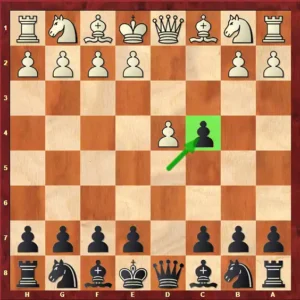
Before I show you the mainline of black, let me show you a common trap in this position.
If black tries to hold on to the c4 pawn in Queen’s gambit chess opening then black will lose the game.
After 3.e3 b5 4.a4 we immediately attack on black’s queenside. Now if black plays 4…bxa4 then we play 5.Bxc4 recapturing the pawn. Black’s a4 and a6 pawn are also weak, in the middlegame they will become easy targets so white is better.
If black tries to hold on to the b5 pawn by 4…c6 then after 5.axb5 cxb5 6.Qf3! black’s a8 rook is trapped.
The key with Queen’s gambit accepted is not to try to hold the c4 pawn. Black should let white capture the c4 pawn in Queen’s gambit chess opening, if black captures our c4 pawn and tries to hold on to the c4 pawn then black will lose the game.
Now let’s look at the main line
After 1.d4 d5 2.c4 dxc4 3.e3 black should play 3…Nf6 4.Bxc4 e6 5.Nf3 c5 6.0-0
White simply develops his pieces to natural squares and go short castling. Next you develop your b1 knight to c3 and put the c1 bishop on b2. White has active pieces and a good game.
Triangle variation:
Black can play 1…d5, 2…e6 and 3…c6 to build a triangle in the centre. This structure is similar to London system from white side.
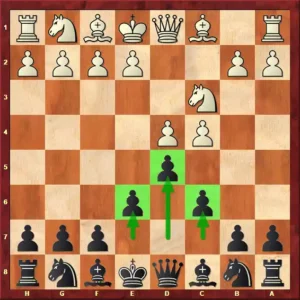
Against this variation also, we can use the same piece setup that we used against slav defense.
Our knights go to c3 and f3, bishops go to b2 and e2, king goes short castling. white gets an easy to play position in this variation Queen’s gambit chess opening.
In this variation of Queen’s gambit opening, our plan is to break the centre next with e4 or we can play cxd5 to open c-file and play on the c-file. For us, this is better version of slav defense because here black’s light squared bishop is less active on b7.
Albin counter gambit:
After the moves 1.d4 d5 2.c4 black can play 2…e5 leading to albin counter gambit.
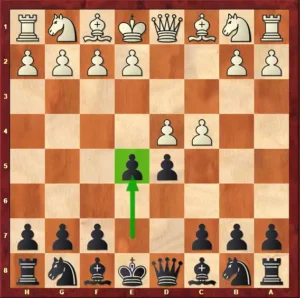
Here black sacrifices a pawn to get piece activity and black hopes to regain the pawn later in the middlegame. It is relatively less popular gambit and mainly used as a surprise weapon against Queen’s gambit chess opening.
You are not going to encounter this opening frequently so there is no need to spend a lot of time preparing against this gambit. I will show you one simple plan that you can use against it to get a good position.
This plan will lead to exchange of queens where you are a pawn up. Although you will have doubles pawns on the central file but it is not easy for your opponent to regain the pawn.
Plan: g1 knight goes to f3, b1 knight goes to d2 first and then b3 to attack the d4 pawn, then you play e4.
Here is the concrete line: 1.d4 d5 2.c4 e5 3.dxe5 d4 4. Nf3 Nc6 5.Nbd2 Nge7 6. Nb3 Nf5 7.e4 dxe3 8.Qxd8 Nxd8 9.fxe3
Queens have been exchanged and you are a pawn up and it gives you a clear advantage. Although you have doubled pawns on e-file but it is very hard for your opponent to attack them and win them.
Next you develop the rest of your pieces and your plan is to start exchanging the pieces because when you have lead in development, you should try to exchange the pieces; as it will be easier to convert the extra material advantage in the endgame.
conclusion:
Queen’s gambit chess opening is one of the best chess openings for white. It is a good opening for beginners as well as advanced players. Having this opening in your repertoire will allow you to play different kind of positions and it will deepen your overall understanding of the game.

